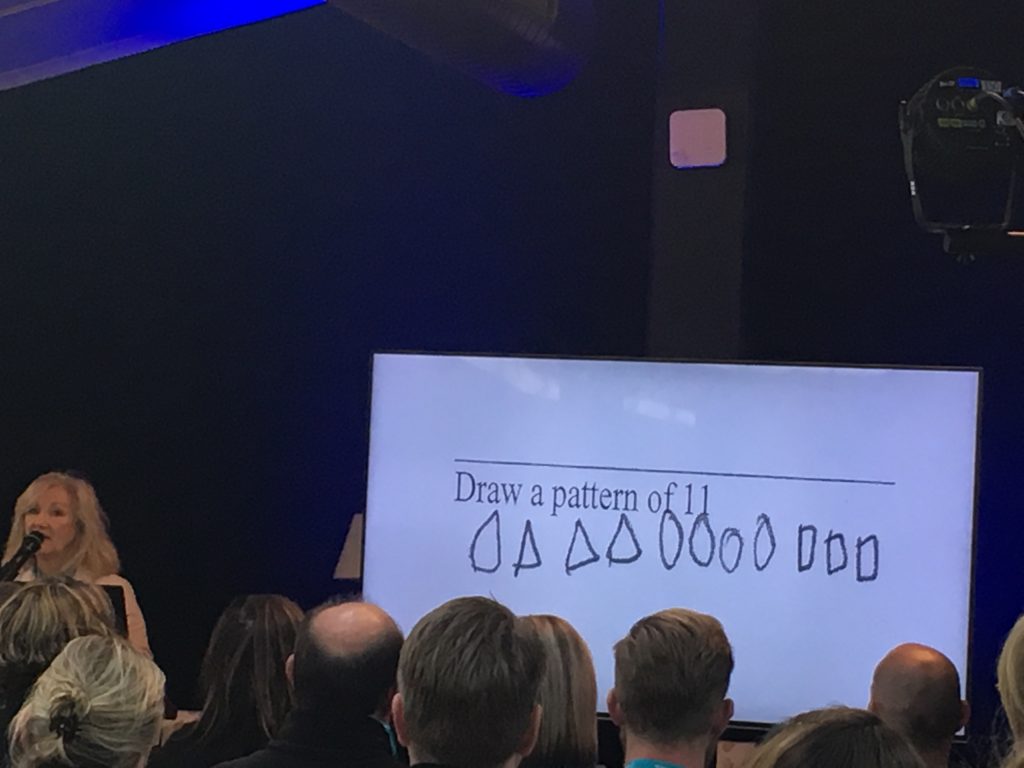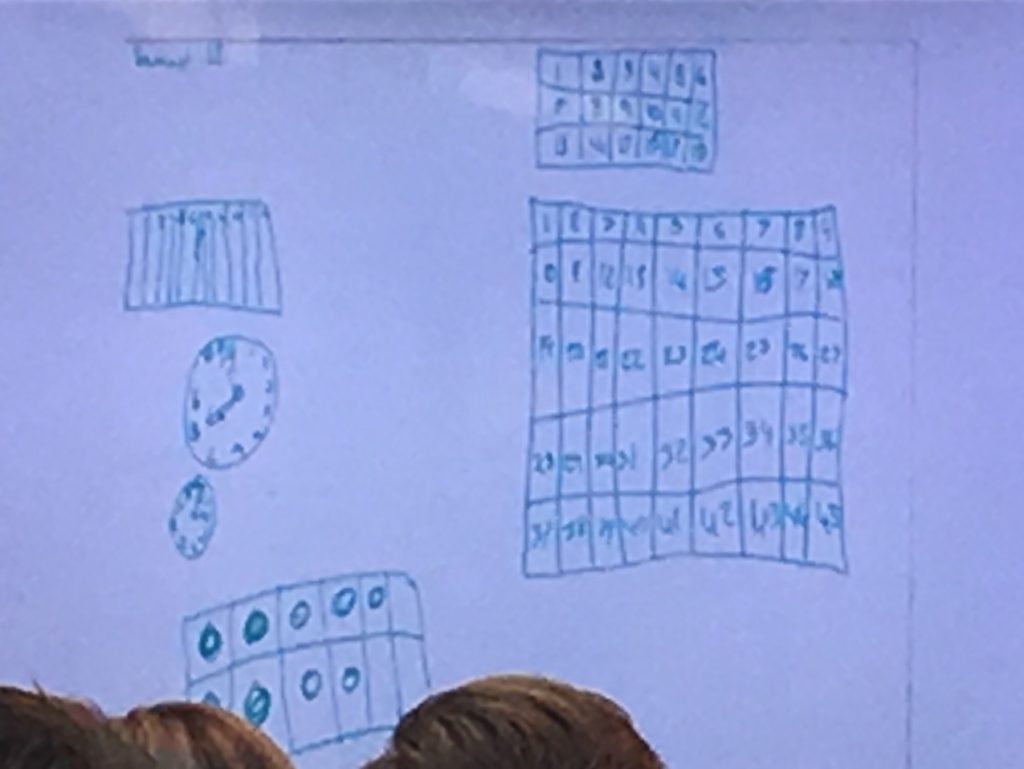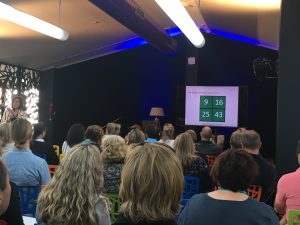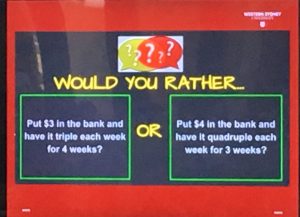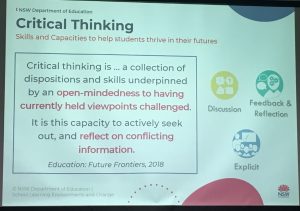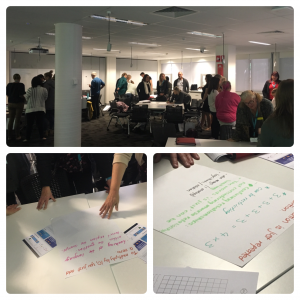In August I presented at the Making 2020 count numeracy conference organised by Tracy Durheim (from Evans River K-12 School) and her team who run the Northern Rivers Mathematics Community. The conference connects teachers, leaders and educators to explore current research and teaching strategies to drive effective mathematics teaching and learning.
The conference opened with a key note from Professor Joanne Mulligan who spoke on supporting students mathematical thinking through spatial reasoning. Joanne highlighted the importance of enriching mathematical experiences for children from a young age, where the exploration of patterns in life (this video was great numbers by nature) can show the beauty and structure of mathematics in nature.
Joanne shared some work samples from her research with young children and their drawing of patterns and number structure. She discussed that students need opportunities to visualise and play with patterns, line and colour, and teachers should be talking with students about what they notice (mathematically). Joanne’s Awareness of Mathematical Pattern and Structure (AMPS) assessment assists teaching with pinpointing where students are at developmentally regarding patterns that can guide teachers’ planning and teaching.
“The [developmental] gap widens as they move towards high school, these students are both in the same kindy class. How do we deal with this gap? We do not have the answers yet.”
Joanne mentioned the gap in students’ understanding of number structure and relational thinking that is evidenced within their representations. From her research, students drawings of structure aligned to their academic performance in standardised testing. There are four basic things that students need to develop for mathematical patterning:
- Simple repetition- unit of repeat
- Spatial patterns – tessellation, transformation shapes
- Growing patterns – decrease, increase
- Functions – tables of values , relationship: one dog four legs, two dogs …
Joanne’s research impacts on how we teach mathematics in the early years in primary classrooms, in particular, on how we allow students to create their own representations to develop number structure. She posed the question, Why do some children find difficultly in developing mathematically? Joanne suggested that they are unable to create abstract ideas in a way to see patterns and make generalisations. Without understanding what relationships are – it’s possible to learn how to count and how to do mathematics. The image to the right shows when students were asked to draw a ruler, clock face, hundreds chart and ten frame. What an interesting task to do with K-2 students.
Associate Professor Catherine Attard also presented a key note, focusing on making mathematical engaging and accessible for all learners. She shared the Numberphile video Why do some people hate mathematics, with Edward Frenkel who states that mathematics has to connect to our everyday lives and that mathematics is part of our culture. Catherine also quoted George Cantor who when talking about learning mathematics stated “the essence of mathematics lies in its freedom.”
@Making2020Count keynote on “Making mathematics engaging” by the engaging @attard_c pic.twitter.com/PNugNbeMz6
— katherin cartwright (@kath_cartwright) August 23, 2019
Catherine discussed What do we really mean when we talk about student engagement? She suggested that teachers need to be engaged in the teaching of mathematics, even if you don’t like it. Teachers need good pedagogical content knowledge and knowing the best ways to teach mathematics can take a whole career to develop, you don’t just leave uni with everything you need. We as teachers need to provide constructive and timely feedback, this is where the engaging pedagogies come into play. Catherine also emphasised that students need to experience success to be engaged, I think this could also be said regarding teacher learning.
To engage students Catherine provided some practice advice for teachers, focus on processes as well as content. The processes (proficiencies within the Australian Curriculum: understanding, fluency, reasoning and problem solving) are the umbrella that drives everything else. Some engaging strategies suggested included the use of WODB (Which One Doesn’t Belong) tasks and well as ‘would you rather’ lesson investigation starters like the classic prize money task, of which a version can be downloaded via the Victorian Education page. Catherine also mentioned using Google maps, Daily Overview and I wonder … questions to engage students.
Catherine suggested that for students to be engaged in a rich mathematics classroom, lessons needs to focus on:
- Open ended tasks
- Rich tasks
- Problem solving
- Inquiry
- Investigation
- Critical and creative thinking
- Tasks to spark curiosity
Kirstin Beck presented a great session discussing What does it mean to innovate? Kirstin suggested that students need exposure to complex problem solving that focuses on creativity. This can be seen within our curriculum when we focus on the general capabilities (for example critical and creative thinking, personal and social capability, numeracy and literacy). She shared that innovative learning environments house many different pedagogical practices that generally focus on; learners being at the centre, the social nature of learning, recognising students’ individual differences and building connections for students between concepts.
I also attended a session by Kris Graham that was jam-packed full of great teaching strategies and practical lesson ideas to support early number sense development. Kris’ focus was on “numerical literacy”, talked about in Jessica Shumway’s book Number Sense Routines. She also highlighted the conditions in which learning of early number sense happens as reported in the article “Fluency without Fear”:
“Research tells us that the best mathematics classrooms are those in which students learn number facts and number sense through engaging activities that focus on mathematical understanding rather than rote memorization.”
Fluency without Fear, Jo Boaler
Kris talked about the importance of developing number sense in the early years, she quoted Rosemary Iron’s work on number sense that focuses on; quantity, counting, making groups, recognising quantity by sight, and matching quantity to number symbol. These link strongly to the 5 counting principles. Di Siemon’s video was shared about what’s non-negotiable when teaching number sense, what parts of place value are essential that without which, students may not be able to move on.
@krisgraham122 sharing Di Simeon’s video regarding early number sense “what is it that’s non negotiable?” pic.twitter.com/2H7eiusdWa
— katherin cartwright (@kath_cartwright) August 23, 2019
Kris also described ways to embed number sense as a daily routine, warm up or lesson launch. This daily focus has multiple benefits for students:
- Make connections over time to and between big ideas
- Students are activity involved
- Time to re teach, reinforce, and enrich
- Includes discussion
- Encourages play
- Leads to access to more efficient strategies to work with numbers
As I mentioned, Kris’ session was jam-packed full of ideas some of those are listed here and should be further investigated; using dot patterns for subitising, number before and after, bucket count on, focus on part-whole relationships, using ten frames, 120 charts, choral counting, bead strings, number strings, number tracks, vertical number lines, floor number lines… the list went on and on! Some of the ideas Kris shared can be found via the NSW Department’s DENS site and also some from NZ maths.
I presented a session on making the most of misconceptions that discussed ways to make mistakes more visible to students so they see how they are part of the learning journey. The group were wonderful and participated in professional dialogue around some common misconceptions and how they arise. Overall the conference was great! I met lots of committed teachers passionate about improving mathematics outcomes for their students. To know more check out their twitter handle @making 2020count and the hashtag #making2020count.
